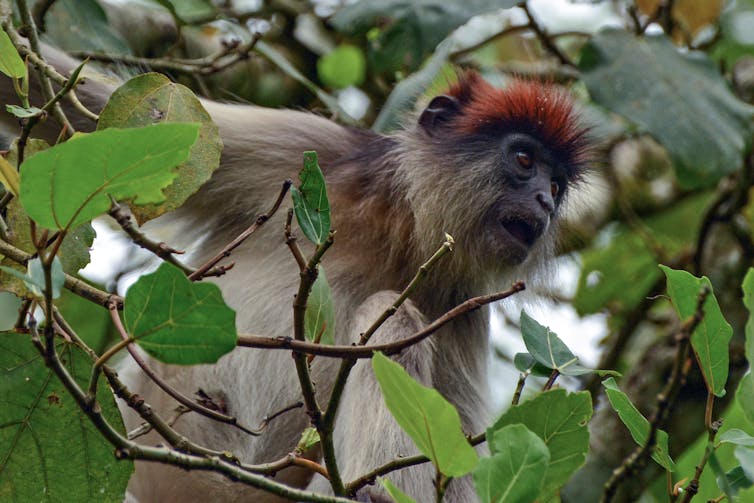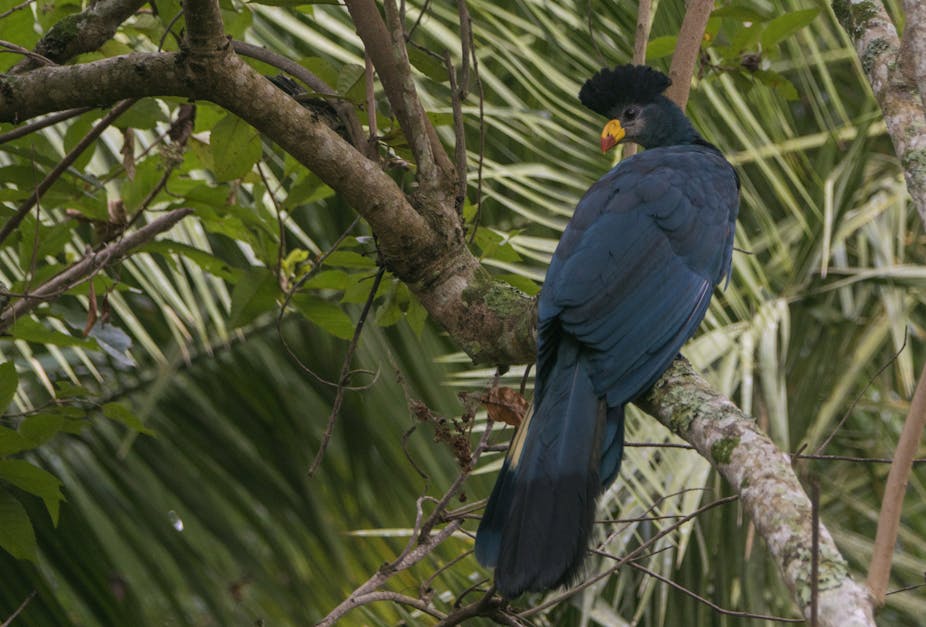The world is losing animals at an alarming rate due to habitat degradation, climate change and illegal human activities in the wildlife protected areas. In fact, it is estimated that, by 2100, more than half of Africa’s bird and mammal species could be lost.
Efforts to conserve biodiversity depend on information about which animals are where. Tracking wildlife is instrumental. Existing tracking methods include camera trapping and line transects, which are specific areas and designed trails respectively, that can be revisited from time to time to monitor habitat conditions and species changes. These methods can be expensive, labour intensive, time consuming and difficult to use, and might not detect all the species that are present in an area. Dense rainforests present a particular problem for tracking, since the vegetation is often very thick and doesn’t let much light in.
Recent research has shown that vertebrates leave their DNA in the environment, both as airborne particles and on vegetation. This offers a useful new way to monitor species.
Our international research team, working in the rainforest of Uganda’s Kibale National Park, wondered whether the environmental DNA methods would be useful to us. We reasoned that if animal DNA was in the air, perhaps it settled and got stuck to leaves. Waxy, sticky or indented leaf surfaces might even be ideal DNA traps. Would simply swabbing leaves collect enough DNA to monitor species and map biodiversity?
Our study demonstrated that many birds and mammals can be detected using this simple, low tech method. It’s a promising tool for large-scale biomonitoring efforts.
Kibale National Park
Kibale National Park in Uganda is famous for its rich biodiversity and has earned its place as the “primate capital” of the world. It is home to 13 species of non-human primates including the endangered Red colobus monkey and chimpanzees.
To test our idea, the research team went into the park’s dense tropical forest armed with 24 cotton buds. Our task was to swab as many leaves as possible with each bud in three minutes.

To tell which animals gave rise to the DNA in the swabs, the team sequenced a short piece of DNA, called a barcode. Barcodes are distinct for each animal, so the barcode found in the swabs could be compared to a barcode library containing all animals sampled to date.
The team didn’t expect great results, because in rainforest conditions – hot by day, cold at night, humid and wet – DNA degrades quickly.
So we were surprised when the results came back from the DNA sequencer. We’d picked up over 50 species of mammals and birds and a frog, with swabs collected in just over an hour, on only 24 cotton buds.
We detected nearly eight animal species on each of the cotton buds. These species spanned a huge diversity, from the very large and endangered African elephant to a very small species of sunbird.
Detected animals included the hammer-headed fruit bat, which has a wing-span of up to one metre, monkeys like the elusive L’Hoest’s monkey and the endangered ashy red colobus, as well as rodents such as the forest giant squirrel. A great variety of birds was detected too, including the great blue turaco and the endangered gray parrot.

The high diversity of animals, coupled with the impressive animal detection rate per swab, suggests we can now collect a lot of animal DNA simply from leaves. The ease of sampling, a task we can ask anyone on our team to do quickly when they are in the forest, suggests we could use this method to track animal diversity in the park, particularly in areas that are rapidly changing.
One of the team members, Emmanuel Opito, is studying exactly these areas in the park for his doctoral project. He is trying to understand how the invasive Lantana camara and the woody herb Acanthus pubescens inhibit forest regeneration. With this leaf swabbing method, it will be easier to explore how removing invasive species and allowing the forest to regenerate will help animal biodiversity recover.
Easy way to gather information
Monitoring animal populations is crucial to comprehend the scale of ecosystem changes and to guide the development of effective management strategies. New technologies like these environmental DNA approaches offer promising support for these efforts.
Because leaf swabbing does not require fancy and expensive equipment or much training to carry out, it can easily be carried out by the staff at Uganda Wildlife Authority, field assistants or biologists working in the forest.
The method can also be scaled up because DNA sequencing technology is becoming more accessible and affordable post-COVID-19. There is a lot of potential for environmental DNA to contribute to biodiversity monitoring at a much larger scale and to inform biodiversity management initiatives.

